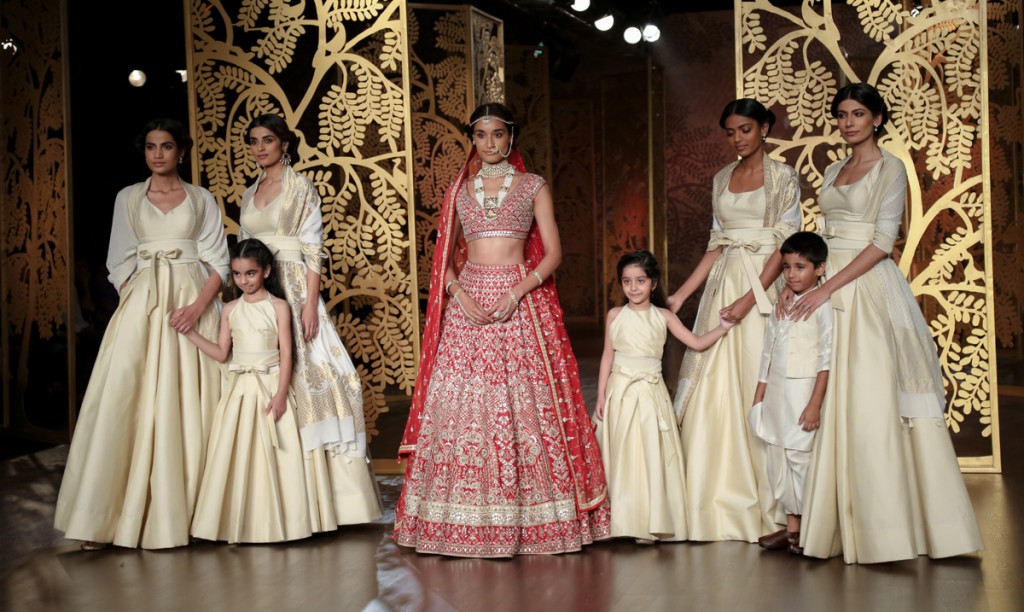There is no consternation in Anitas mind, she sharply cuts through fashions impertinent milieu with her new introduction, the Obi belt, zari embroidered skater dresses with tie details and the voluminous bell shaped offerings, as she courts white with aplomb.
By Asmita Aggarwal
What happens when the music is so soulful that it overtakes the beauty of the outfits? Well, you miss some of the beauties floating because you are immersed in the sound of Deveshi Sahgals mesmerising voice singing Amir Khusraos timeless melody Chaap Tilak...live for an audience that is probably tired of listening to Western hard rock and Eurythemix.
But Anita Dongre is one of those astute businesswomen, who has managed to create a multi-million dollar empire without getting involved in any fashion politics and has recently opened two stores in SoHo, New York besides, of course, enticing the Duchess of Cambridge Kate Middleton with her outfits.
Seeing the chaos in the design world that has forced many to shut shop, Anita played her cards well and due to the popularity of her prêt label AND, she got initial investment by General Atlantic, a private equity firm, and now seeing her growing business she has handed over the reins to her son Yash.
Though she has also joined a social cause enterprise titled Social Quotient with the youngest millionaire under 30 Samayak Chakrabarty, and Milind Sarwate to work on rural development among other things. So, she is not myopic about just fashion and is ambitious enough to try new things at the risk of them failing.
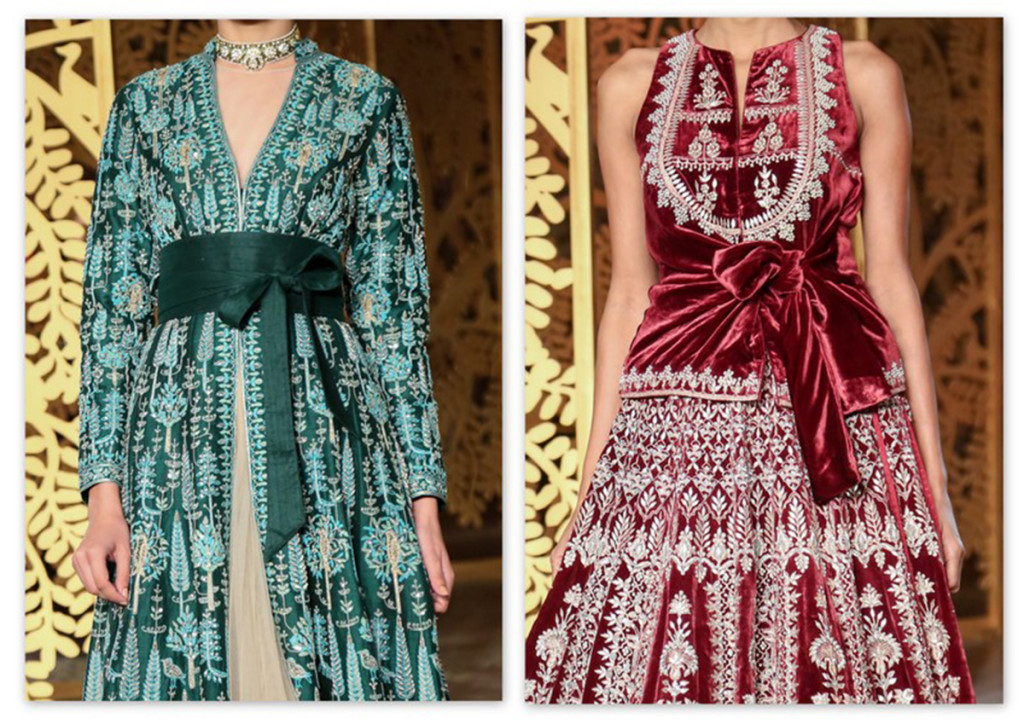
One of those new things is the obi belt, used in a kimono, a very Japanese addition to a very Indian special occasion that she fastened above, below and on the waist to create drama. This year her line, Tree of Life pays homage to the Bishnoi community of Rajasthan, who can give up their lives to save trees and found representation in the flavours of the region with gotta-patti, her unique handwriting that has been part of her bridal wear, since she began.
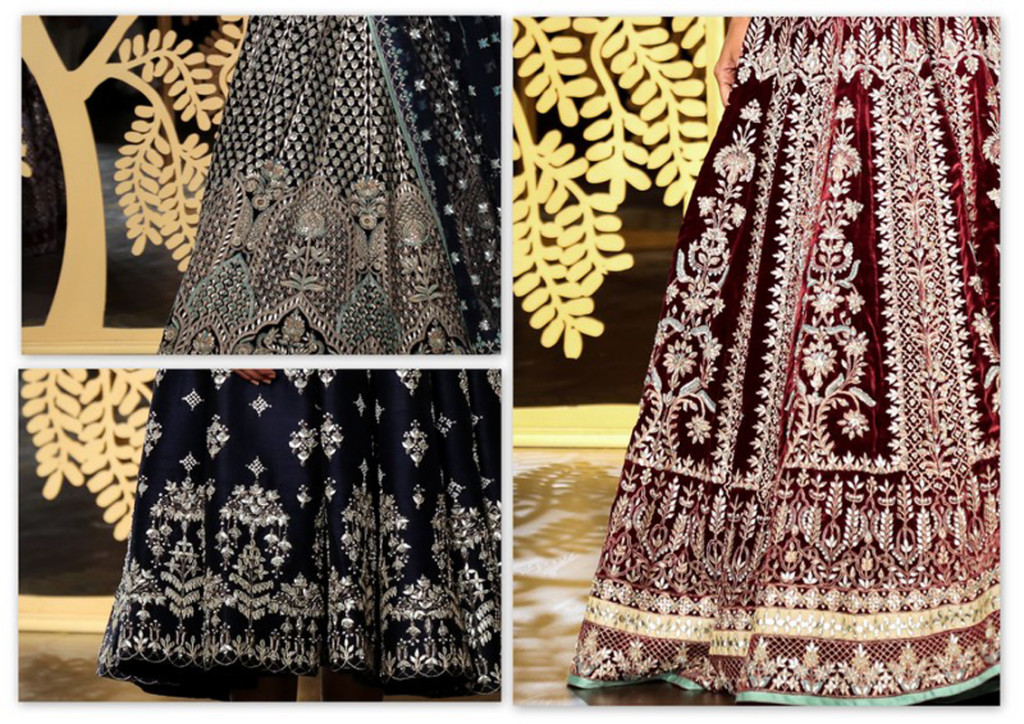
Contemporary elements like obi belts and frills add a little fun to bridal outfits. Flattering, modern silhouettes in traditional textiles look stunning. Apart from the traditional red and pinks, green is a lovely colour for brides this season. But more than following trends, I feel brides must follow their hearts and wear what makes them feel special, says Anita.
There were scooped backs, V necks as well as ultramarine, which is now swiftly making its way into the bridal lexicon, though what was truly riveting was the Mughal architecture, zari embroidered on dark black potlis, which accompanied velvety carmine slit kurtas teamed up with white net tutu skirts.
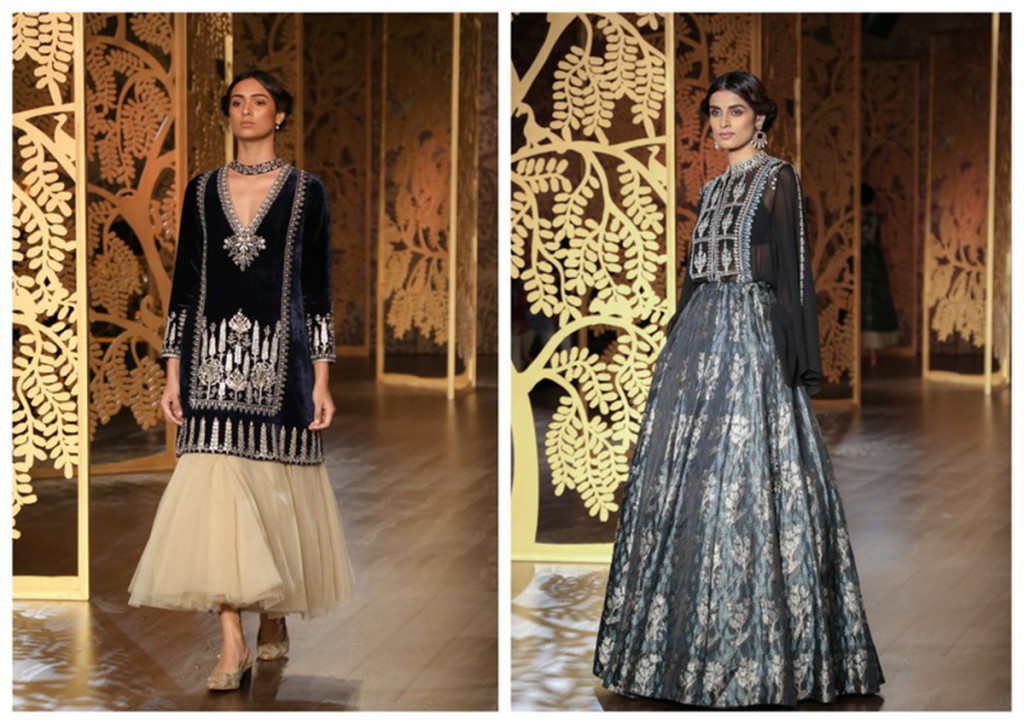
There was also a mix of Indian and Western in the short printed belted-at-the-waist dresses, with zari patchwork on the shoulders, as well as cuff and bishop sleeved blouses that were worn with embroidered juttis.
This year has been a celebration of the bell-shaped skirts (and lehengas with pockets, yes the bride must have the option of hoarding stuff that she wants no one to see), that adds volume in the bottom and hides those not lying hips, making it a preferred silhouette for millennials. What has also been interesting is the rise of the duppatta for men that came in Anitas case with zari embroidered corners in an assemblage of hues from blush greens to cobalt blues.
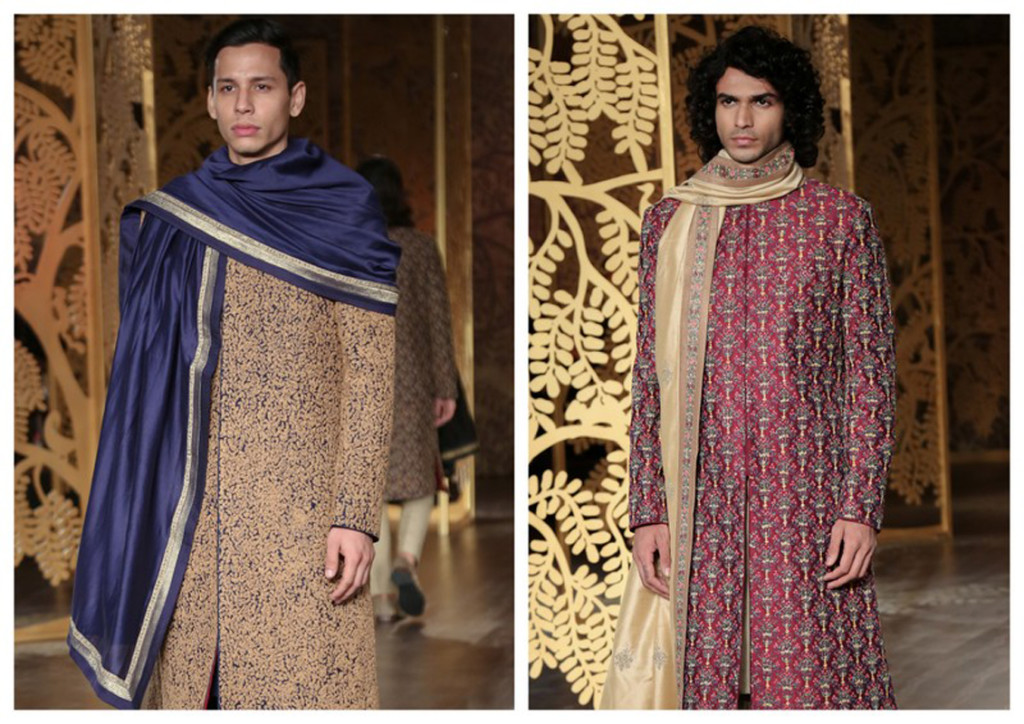
The absolutely lovely Kanishtha Dhankhar, in a traditional red lehenga with bridesmaids in white, yes white and gold, which would be considered an oddity two decades ago, ended a story that reverberated with the spirit of Rajasthan, the land of a thousand stories, that lay buried in the sands of time.
